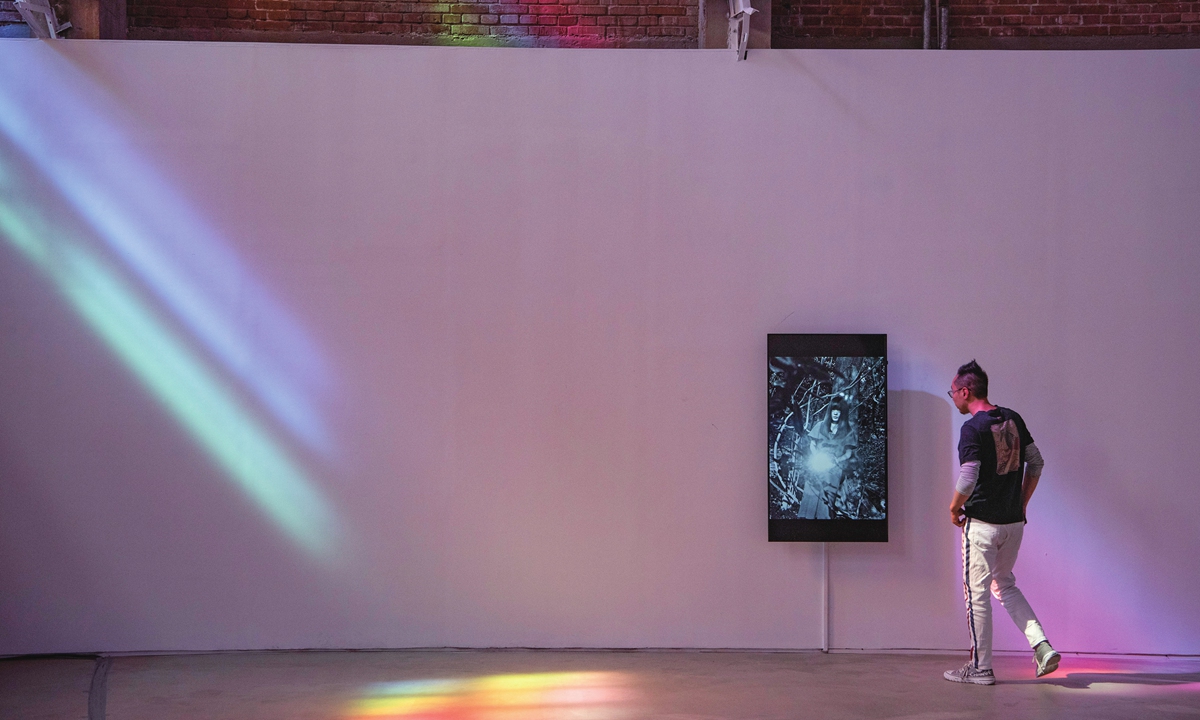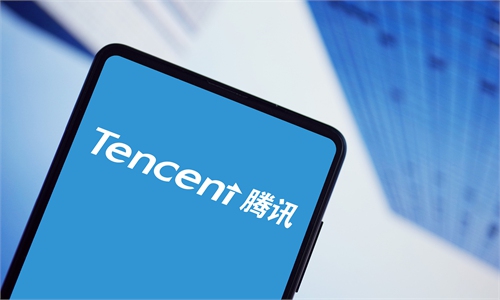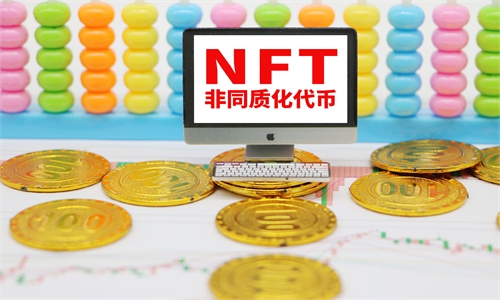Chinese investors and enterprises eye BAYC NFT collections
Market potential to be explored under standardized guidance

A spectator views an NFT art work at an NFT art exhibition held in Beijing on May 9, 2021. Photo: cnsphoto
As the digital asset industry gains momentum with the advent of non-fungible tokens (NFTs), multiple Chinese investors and enterprises have been jumping on the latest craze, aiming to obtain an ape from the increasingly popular Bored Ape Yacht Club (BAYC).
BAYC is a unique digital collection of 10,000 Bored Ape NFTs living on the Ethereum blockchain, and the Bored Ape doubles as owners' Yacht Club membership card with access to members-only benefits, according to BAYC's official website.
Cai Wensheng, the founder and chairman of Chinese tech firm Meitu, purchased BAYC#8848 on May 1, paying 187 ethereum ($550,000). Zhu Xiaohu, the managing director with GoldenSand Captial who invested in China's delivery giant Eleme and online car-hailing platform Didi, also obtained BAYC#9279 for 170 ethereum on April 30, domestic news outlet Jiemian.com reported.
Other than domestic investors, a variety of Chinese enterprises including Li-Ning have also sought to gain a foothold in the area.
The brand has incorporated BAYC#4102 into several of its sports products, while the figure showed up through different forms on multiple offline promotion events, according to a post Li-Ning's official Sina Weibo account.
According to NFTGO.com, the market capitalization of BAYC reached $1.14 billion with a total of 6,282 holders as of press time.
The sales volume in the past 24 hours reached $31.49 million, up 205.38 percent on a daily basis, while the floor price for each Bored Ape NFT was at 116 ethereum.
The top three NFTs ranking on OpenSea, the largest NFT marketplace, are Otherdeed for Otherside, BAYC, and Mutant Ape Yacht Club as of press time, which are all under BAYC's creator - Yuga Labs.
Following the success of BAYC, Yuga Labs has further expanded the universe by stepping into the metaverse with the Otherside project in April.
Integrating with metaverse
The Otherside project is a metaverse game world that aggregates various NFT projects, developed by Yuga Labs and blockchain gaming developer Animoca Brands, according to the Jiemian's report.
Yuga Labs further announced that it would launch a new NFT designed specifically for the game - "Otherdeed" on April 30, which is a NFT digital land project. If collectors are eyeing to acquire a digital land in the metaverse, owning a NFT from the BAYC is also a means of access, which made the already hyped series a blue-chip NFT asset for collectors.
The combination of NFTs with the metaverse aims to attract more users and form more beneficial interactions between digital communities, and companies are able to obtain traffic and fame from the concept of metaverse, which is different compared with the combination of NFTs and digital art, Pan Helin, joint director of the Research Center for Digital Economics and Financial Innovation affiliated with Zhejiang University's International Business School, told the Global Times on Thursday.
The core nature of NFTs is to protect innovation and intellectual property which is also the prototype of the business application models for NFTs, said Wang Peng, an assistant professor at the Gaoling School of Artificial Intelligence at the Renmin University of China.
Wang noted that NFTs initially gained attention and investment while expanding to more application scenarios centered around the core nature for digital forms like digital arts, noting that the business model has further expanded into a new sector after NFTs integrated with digital assets and finance technology.
Each NFT is a uniquely identifiable digital item that can be authenticated through blockchain, and is unable to be endlessly reproduced.
Following the metaverse gaining more popularity, collectors have shifted their preferences, with sales of digital land and other projects in the space reaching $513 million in 2021, CNBC reported in March, citing data from a report by NFT data company Nonfungible.com.
The report also showed that the trading in NFTs hit $17.6 billion in 2021, a 21,000 percent surge from $82 million recorded in 2020.
Pan stressed that the combination of NFTs and the metaverse allows users to derive benefits from creating in the space by adopting NFTs while utilizing the openness of metaverse games.
Pan added that the flow of traffic is a key factor for this combination, which will also determine whether this business model can develop in a sustainable way fort the long run.
Potential to be explored
The National Internet Finance Association of China, the China Banking Association and the Securities Association of China jointly issued an initiative in April, which urged member firms to control financial activities involving NFTs and process real-name identification for issuers, sellers and buyers, while actively cooperating with responsible authorities in addressing anti-money laundering concerns.
Wang pointed out the market potential for NFTs is still huge with more application scenarios to be explored, including integrating the technology with a variety of sectors that have contributed importantly to the legal development of some innovative works and digital assets.
China's NFT market would be valued at 29.8 billion yuan ($4.68 billion) as of 2026 if regulators permitted reselling, according to data from Guosen Securities.
Wang also stressed the importance of protecting and properly guiding the use of NFTs for sectors that are in line with future social development considerations, while tamping down on illegal activities such as mining under the guise of NFT technology.
The Metaverse Industry Committee under the China Mobile Communications Association called for companies to resist unchecked speculation and guide reasonable expectations in a statement released in April, as the development of digital collections is still at an early stage with unclear value standards.


